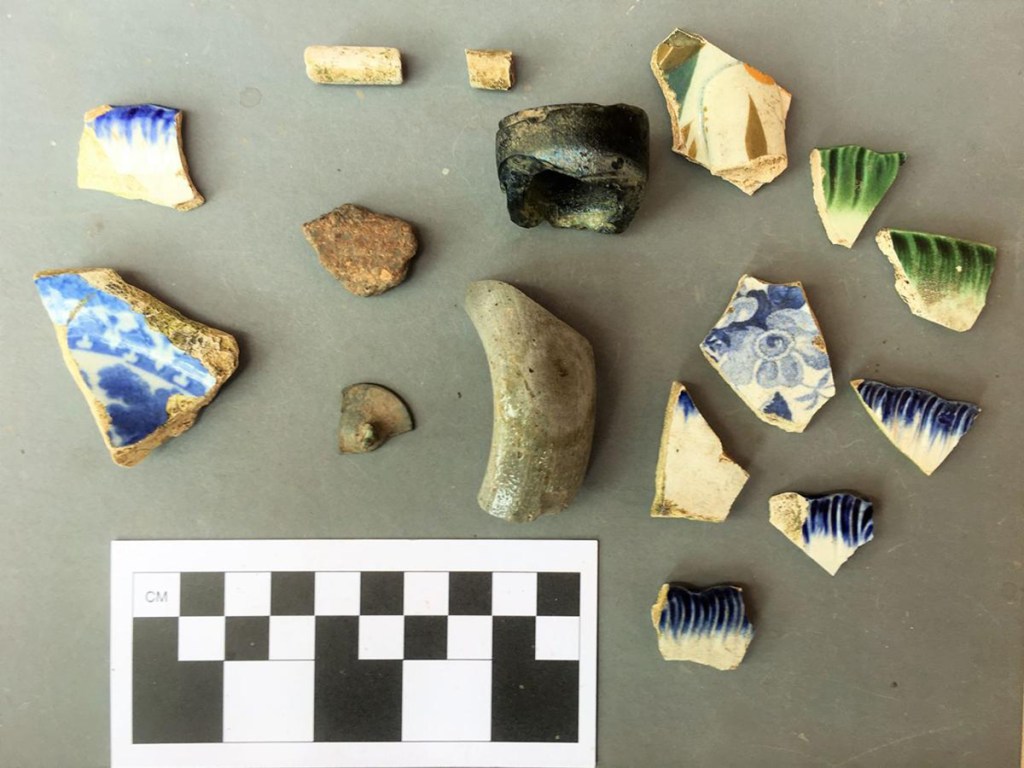After decades of mystery and research, original settlers homestead may be found
Published 12:45 pm Sunday, November 1, 2020

- Ceramics found by members of the New Acadia Project. Ceramics are a good indicator of when and where in time they were produced.
The original homestead where explorer Joseph Broussard led a group of Acadians to in South Louisiana in 1765 has been a place of mystery for many decades.
Now, though, researchers may have found the answer to where exactly those settlers ended up.
“We have enough evidence that we think we may have made a discovery based on the material from the sites we looked at to have one of the original homesteads,” said Mark Rees, a professor of anthropology at the University of Louisiana at Lafayette. “No one knows much about it.”
The New Acadia Project, which has been researching the original group of settlers, combines archaeological survey and historical research with public outreach and community engagement in a collaborative effort to discover and investigate the lost colony of the first Acadian settlers, Rees said.
For Rees and many others working on the project, they believe Broussard and the Acadians settled on the Teche Ridge, between St. Martinville and New Iberia, in the vicinity of the present-day village of Loreauville because they needed a new place to re-establish their community after they were exiled from Nova Scotia.
According to the Louisiana Public Archaeology Lab, the colonial government of Louisiana provisioned Broussard and the reported 193 Acadians to settle along the Bayou Teche in the Attakapas District.
Within months of their arrival, they were afflicted with a virulent epidemic, possibly yellow fever, and as many as 34 died between the summer and winter of 1765.
Regina Lowe, who studied anthropology at UL Lafayette, decided to join the project because the field work will help her and her colleagues answer questions they’ve been asking since the start of the project.
“We found a lot of building materials, brick, nails, metal and we also found a lot of ceramic materials which we are particularly interested in,” Lowe said.
The ceramics are a good indicator of when and where in time they were produced, according to Lowe.
“Because we are looking for the first settlements in 1765, the ceramics can give us concrete evidence of potential sites,” Lowe said.
The ceramic findings can be a key to unlocking where Broussard and the Acadians lived in the New Iberia area.
“It would be significant in terms of understanding what they were eating the first few months when they first arrived,” Reese said. “If we uncovered animal remains or plant remains in the future, we would know what they ate.”
Reese noted that if the group is able to uncover post remains, they would know what kind of buildings the early Acadians were using.
And with that evidence, they would be able to determine what an Acadian homestead looked like with their material culture.
“So it’s just not the information value because of historical significance and the ties to the culture,” Rees said about the NAP project, which started in May of 2013.
While giving a talk at Vermilionville, Rees said the locals aren’t really sure where Broussard’s group settled — the first group of Acadians settled in south central Louisiana in 1765.
Reese said many people would like to know where their people settled, so there’s a connection to the cultural tradition.
“It’s kind of unbelievable for a region that values its traditions on the Acadians because the locals here aren’t really sure where they settled,” Reese said. “Myth has replaced history.”





